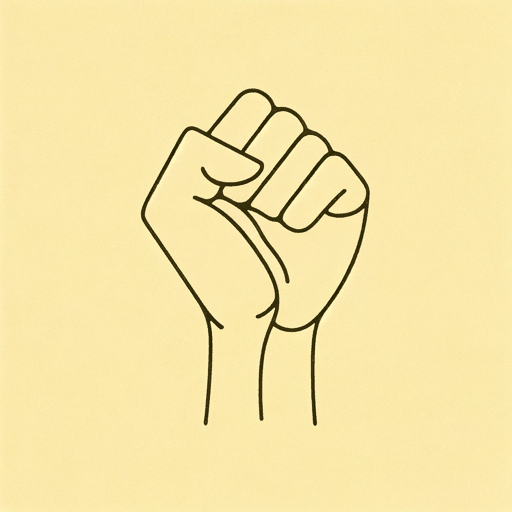50 pages • 1 hour read
Angela Y. DavisAre Prisons Obsolete?
Nonfiction | Book | Adult | Published in 2003A modern alternative to SparkNotes and CliffsNotes, SuperSummary offers high-quality Study Guides with detailed chapter summaries and analysis of major themes, characters, and more.
Summary and Study Guide
Overview
Are Prisons Obsolete? by Angela Y. Davis is a nonfiction critical text, published in 2003, that advocates for prison abolition. Davis tracks the evolution of the penitentiary from its earliest introduction in America to the all-consuming prison industrial complex as it exists today. The author argues that incarceration is an ineffective system of justice; rather, it has become a lucrative industry. Davis, a lifelong activist, examines the structures of bias that uphold the prison system, using personal experience and academic analyses to reveal potential changes that could lead to a more empathetic justice system and a more equal society. The book is considered a foundational abolitionist text by antiprison activists.
Due to the subject matter of Are Prisons Obsolete?, this guide discusses difficult topics, including racial and gender-based violence.
This study guide follows the first edition paperback published by Seven Stories Press in 2003.
Plot Summary
Davis divides Are Prisons Obsolete? into six chapters, each dealing with a focused topic about the American prison system. The first chapter provides an overview of Davis’s concerns about rapid prison expansion and why she believes that prison reform is not enough to deal with the system’s engrained issues. Davis uses California as an example of public-sanctioned prison expansion, as she tracks the exponential growth of prison construction in the 1980s and 90s. She finds that despite the visibility of prisons on the landscape and in popular media, the public doesn’t truly know what happens behind a prison’s walls—and people don’t care enough to find out. Davis reveals the disproportionate incarceration rates for Black and minority communities, which contributes to the public’s lack of interest in reform. She raises questions to promote antiprison thought, hoping that her book will change people’s minds about the permanence of prisons.
Chapter 2 centers on the legacy of racist institutions in the modern prison structure. Davis traces the evolution from slavery to Black Codes to lynching and segregation, all of which influence the public’s perception of Blackness and criminality. Davis points out that prisons became a legal vehicle for white society to continue to control Black labor using practices like convict leasing and chain gangs. Modern prisons, maintaining disproportionate incarceration rates for Black people, mirror these earlier practices through other exploitative labor. Davis concludes that although racism remains in modern prisons, the abolition movements that eradicated successive racist institutions prove that prison abolition is not a far-fetched dream.
In Chapter 3, Davis contextualizes the historical period that saw penitentiaries become the main form of punishment. Prisons, in that time, were considered a kind of reform, especially by religious groups who believed that the isolation of prisons could provide spiritual rehabilitation. Davis explores two major reformists, John Howard and Jeremy Bentham, and their theoretical contributions to penitentiary design—both structurally and ideologically. Davis includes various sources that criticize the use of solitary confinement—from Charles Dickens to official Human Rights Watch reports—describing it as a kind of torture. In the modern era, Davis acknowledges, prisons no longer hide their oppressive regimes, citing particularly cuts to life-changing education programs and increases in super-maximum-security prisons.
Chapter 4 focuses on the differences between men’s and women’s prisons. Using prison literature by women inmates, Davis describes the domestic-inspired structure of women’s prisons. This literature reveals the near certainty that imprisoned women will be sexually assaulted behind bars, through strip searches, internal cavity searches, or outright sexual violence by guards. Davis traces how the system imaginatively construed female criminals as different from their male counterparts, particularly in relation to mental health and redeemability. Citing real-world examples and textual theories, Davis notes the peculiar reforms in women’s prisons that have led to the facilities becoming more repressive. Throughout the chapter, the author highlights how women of color experience intersections of both race and gender in their punishments.
Chapter 5 explores how governments and corporations deconstruct the crime and punishment system to use prisons and punishment for economic profit. Davis defines the multitude of economic and political interests now invested in crime and punishment as the prison industrial complex. She connects the prison industrial complex to the military industrial complex—and to the various distant entities profiting from ever-increasing incarceration rates. Davis shares statistics on the growing number of private prisons run by corporations without oversight. She sees that American-style prisons like the supermax have been adopted around the world, spreading inhuman punishment practices as well as the social biases that support these institutions.
In her last chapter, Davis shares ideas that activists can adopt to destabilize the prison industrial complex and eventually abolish prisons altogether. She suggests that a program of decriminalization would reduce the number of people in prison, and that expanded social welfare infrastructure would prevent countless crimes committed for survival. Davis shares the story of Amy Biehl—and the reconciliation of her parents and her killers—as a model of a successful alternative to punitive justice. Underneath the alternatives she presents, Davis suggests that the goal of antiprison activism is to create an equal society that doesn’t use punishment as its first and only form of justice.
Related Titles
By Angela Y. Davis
Featured Collections
Books & Literature
View Collection
Books on Justice & Injustice
View Collection
Books on U.S. History
View Collection
Challenging Authority
View Collection
Class
View Collection
Class
View Collection
Community
View Collection
Contemporary Books on Social Justice
View Collection
Education
View Collection
Equality
View Collection
Globalization
View Collection
Political Science Texts
View Collection
Politics & Government
View Collection
Power
View Collection
Sociology
View Collection




